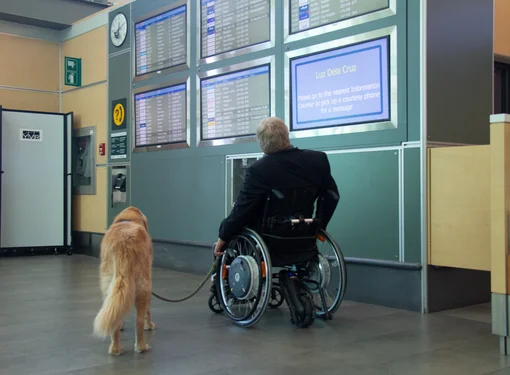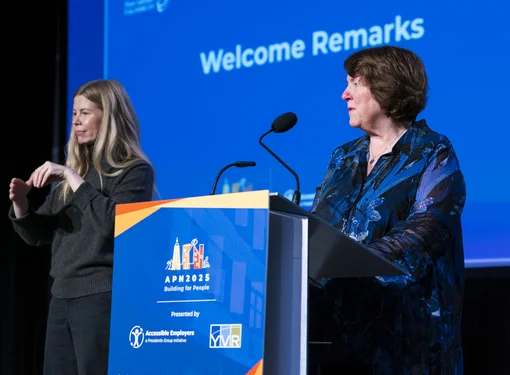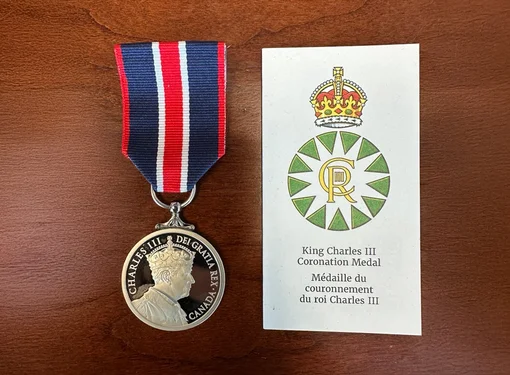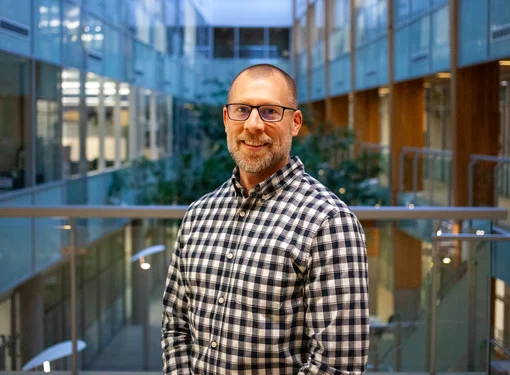Breaking the Sound Barriers
Cathryn Wellner and Robin Jarman were excited about their upcoming trip to Vancouver, British Columbia. The highlight of the visit was attending the award-winning Canadian musical Come from Away at a city theatre. But as soon as the show began, there was a problem. Robin had difficulties hearing the performance.
“It was a fabulous production, but the sound was not as clear as it could have been,” said Cathryn. “At the end of it, I said, ‘Oh, I’d love to see another one of these productions. Robin said, ‘never again.’”
Robin, who wears a hearing aid, spent a large part of the evening fiddling with the device, adjusting noise levels through the programs installed in his hearing aid. This is a familiar issue for hearing aid users; the devices tend to amplify every sound in addition to the one users want to focus on. It’s often a disorienting and distracting – not to mention impossible – listening experience.
Both Cathryn and Robin came away from the theatre feeling not just disappointed, but also frustrated that hearing accessibility is rarely taken into consideration in the many different kinds of venues they’ve experienced.
Hearing loss and accessibility is a topic deserving of attention, especially in light of May being Speech & Hearing Month in Canada.

Accessibility Needs to Be Considered
Hearing loss consistently ranks high as one of the most common disabilities. According to the Canadian Hard of Hearing Association, one out of 10 Canadians – four million people – have hearing loss. It is noted that this number may be underestimated, particularly amongst people with mild loss and older adults who may not report their loss due to stigma or other reasons.
Robin feels that the barriers for people with hearing loss should not exist to the extent that they do. Beyond the technology that exists in today’s hearing aids, despite their background amplification peccadillos, technology is available for the built environment that makes a world of difference to those who have hearing loss.
“It’s a tragedy that we are ignoring seniors or anybody with a hearing loss,” he said. “There is the possibility of helping people with hearing loss with a hearing loop. These things can be installed; even restaurants can have a small hearing loop available that sits on the table and enables anybody with a hearing aid with a telecoil setting to hear the conversation.”
A hearing loop provides a magnetic, wireless signal that is picked up by the hearing aid when set to the ‘T’ (telecoil) setting, giving users access to a crisp and clear sound experience. Many standard hearing aids are equipped with telecoil. Hearing loops are simple wires that circle a room, usually placed under carpeting, and can connect many hearing aids and cochlear implants directly to sound systems.
The loops bypass ambient noise so users can clearly hear the bank teller behind plexiglass, announcements at an airport, or actors on stage. The technology is not new; telecoils were installed in hearing aids during the 1940s to help users use telephones without feedback.
The experience of using a hearing loop for the first time is so emotionally powerful that many users are reportedly brought to tears. The reaction should not be a surprise. Beyond hearing, it means people with hearing loss can participate in what’s going on around them, no longer isolated in a lonely bubble of silence.
“People are dismissing the worth of people with hearing loss by not having hearing loops,” said Cathryn. “We went to a senior’s centre for lunch, and it was packed, noisy. We sat next to a couple and spoke with the woman, but her husband, who couldn’t hear, was completely withdrawn and even got a bit teary-eyed at one point because there was no way for him to hear. And you go into restaurants as a senior, well they’re the worst offenders,” she added.

The Best Accessibility is Invisible
If venues consider hearing accessibility, they will often opt for a clunky headset system where those with hearing loss can track down a headset upon arrival. But headsets fall short of meeting the Universal Design ethos around the idea of buildings being used to the greatest extent possible without the need for adaptation or specialized design. A good example: a building incorporating a beautiful ramp to its front doors that everybody can use instead of tacking on a ramp to the side door just for wheelchair users.
“The problem with hearing headsets is that seniors and many others do not want to be wearing them,” said Robin. “It’s telling everybody, ‘I have a problem.’ Additionally, venue staff must take every used headset and thoroughly clean it. And what if you have three headsets and six people asking for them?”
This is why education and awareness around disability are an essential part of the Rick Hansen Foundation’s mission of creating a society without barriers – so that Robin and others have the opportunity to participate in the places where we live, work, learn, and play.
Added Cathryn: “It breaks my heart to see Robin, who is such a vibrant, alive, gregarious person being in some place where he should be able to enjoy himself, relax, and engage in conversation. And be shut out.”








